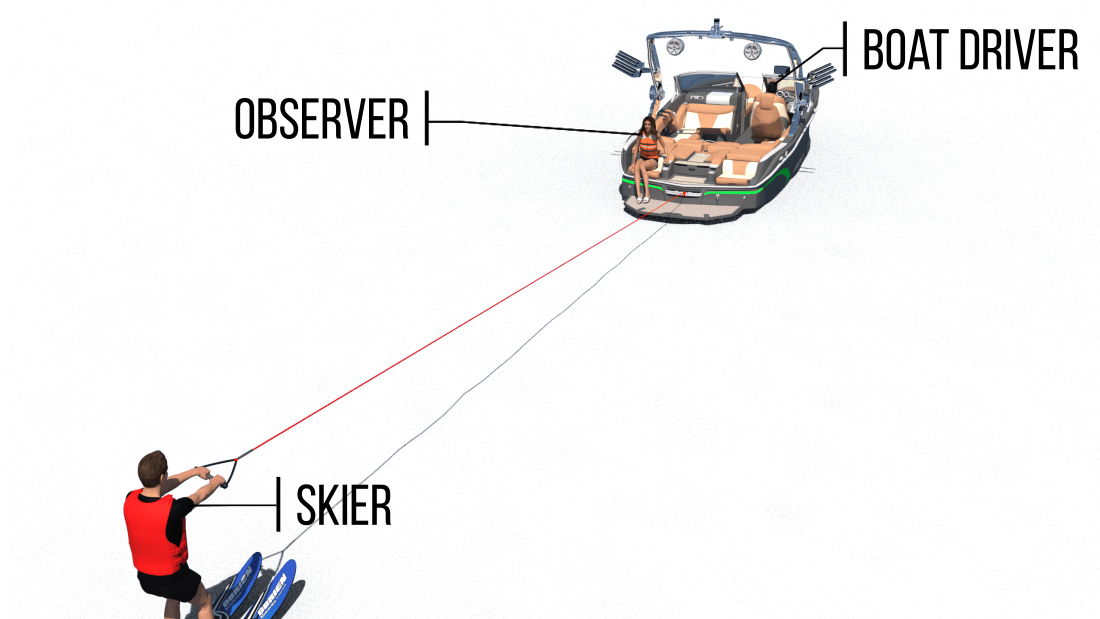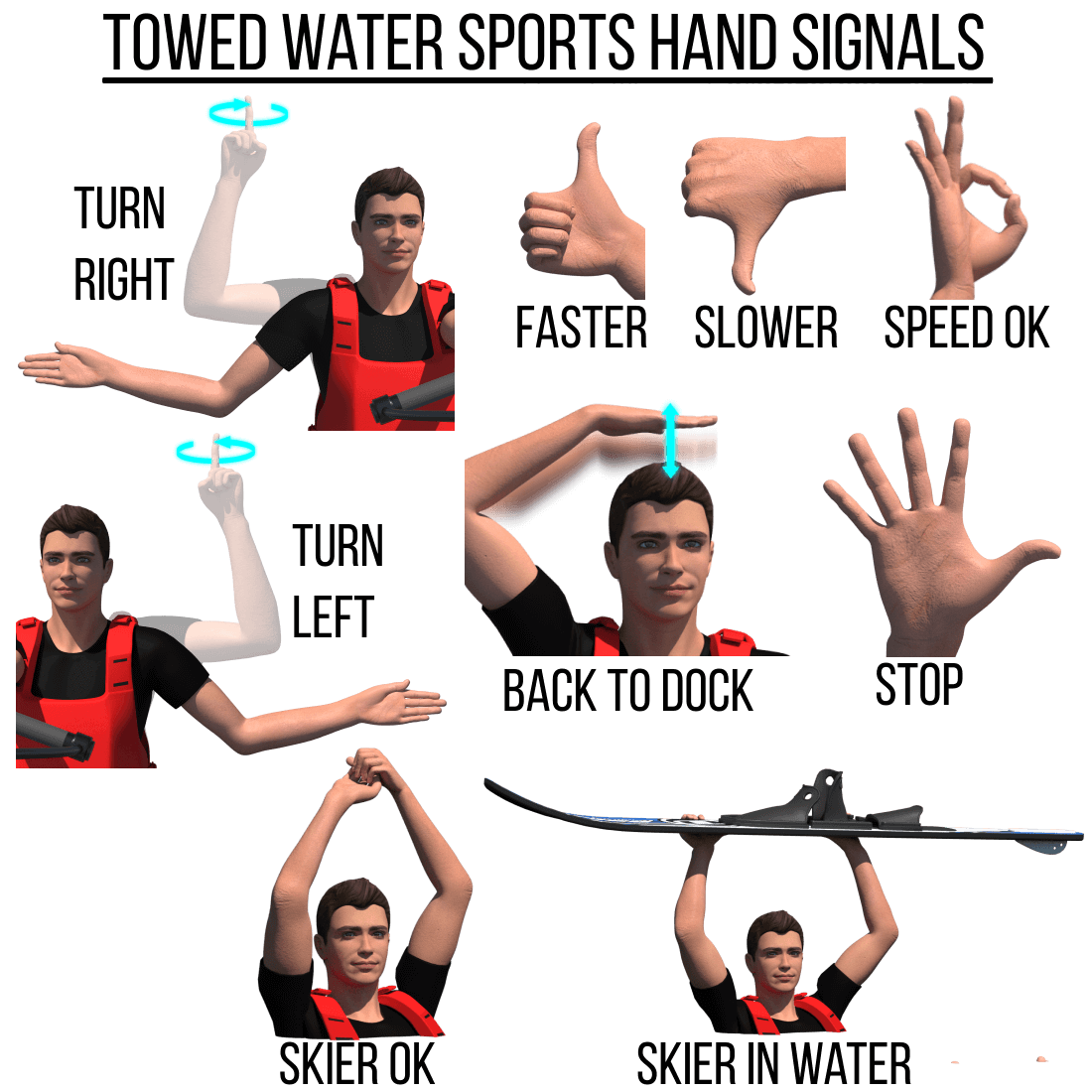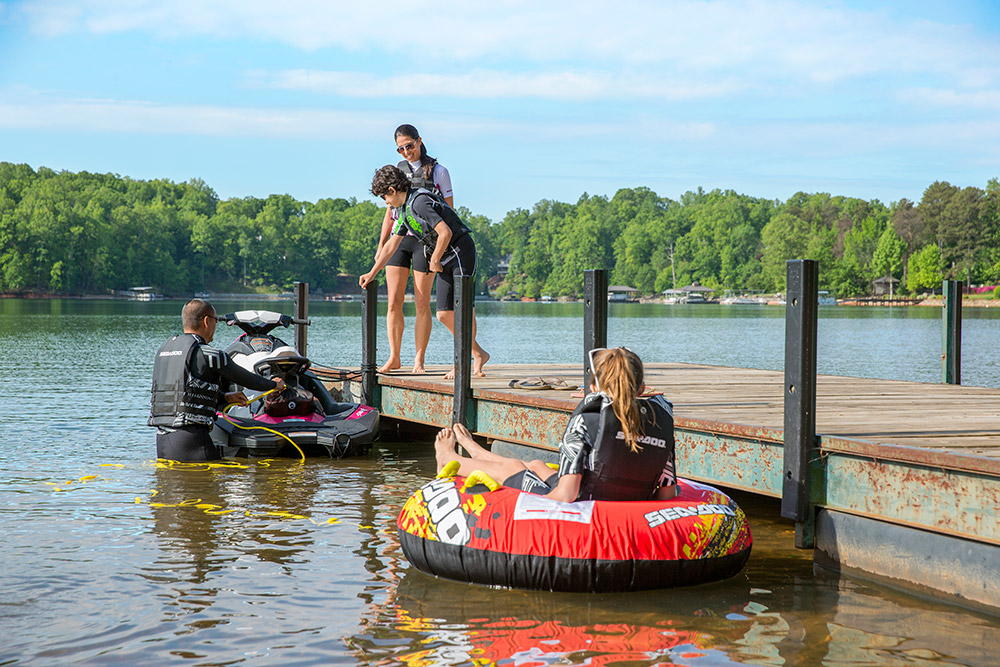Towed Water Sports - Waterskiing regulations
Fast becoming one of the most popular sports in the nation, water skiing also has certain aspects of danger. "Skier mishaps" have been consistently listed in the top five types of boating accidents.
Skiing should be a team sport. The team players are the skier, the boat driver and an observer to keep a proper lookout. While the driver watch the traffic, the observer should continuously keep an eye on the skier and relay messages to the driver. The boat should also be equipped with a wide angle rear view mirror so the driver can see the skier.
What should a skier do if she/he falls in the water?
After falling, the skier should hold a ski up out of the water while waiting to be retrieved, and if necessary waves his or her arms

Boating hand signals
What are the common hand signals for towing water sports?
The water skier should be able to communicate to the towing boat with hand signals. A clear understanding in advance of the desires of the skier will lead to a safer sport. Try not to think for the skier. Let him or her direct the actions of the boat.

When a skier falls, it is important to hold up a water ski. This makes it easier for the tow boat to see you and also notifies other boats in the area that you are in the water.
Do not water ski after dark. It is very dangerous and against the law. Many states have rules regarding when you can water ski. Check for state-specific information if water skiing in an area unfamiliar to you.
Tubes, Wake Boards and other Towed Devices

Another popular water sport is "Tubing" or being pulled behind the boat with various "towable devices." Tubes and towable devices come in a wide range of shapes and sizes. While the exhilaration of being pulled behind the boat can be great fun, the boat operator and those being towed need to be aware of many safety issues.
8 water sports towing safety tips?
- Check your equipment - make sure the towing cleat or transom eyes are tight and secure. You should also check the towable equipment before each use. Read your owner's manual for proper inflation and other safety issues relating to the particular piece of equipment.
- Select a safe area to tow. There should be a minimum of 100 feet of open water on each side of the boat, 3,000 feet of unobstructed waterway in front of the boat and there should be no in-the-water obstructions such as docks, pilings, rocks, speed signs, etc.
- State or local law may restrict towing areas. Check your State and local laws and ordinances prior to towing.
- Make sure the person(s) being towed are wearing their life jackets.
- Make sure there is a designated "spotter" on the towing vessel or the vessel is equipped with a mirror. The "spotter" should continually monitor the towing device(s) and status of the rider(s). He/she should keep the driver updated on the status.
- The driver should always be looking at the path of the boat, other boating traffic and potential obstructions.
- Choose a safe location to stop your boat and make sure that the towable device is slowing at the same rate as the boat.
- Wake surfing is permitted, as long as it is conducted behind a boat with an inboard motor.
Be extremely mindful of the slingshot effect. That is when the boat makes a sudden turn and the towable device continues in the same direction, crosses the wake and may be subject to hitting objects in the water.
